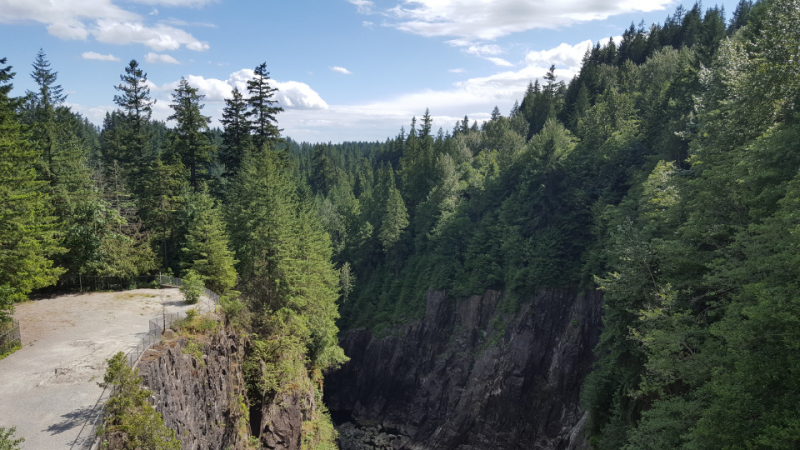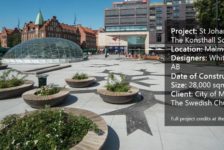Has your mind ever wandered in a meeting? You start daydreaming and the speaker’s words fade away. We do this all the time. In fact, we do it between a third to half of our waking hours according to a study by Killingsworth and Gilbert in 2010. When we’re lost in thought, we shift from the central executive network (CEN) in our brain, which focuses on tasks, to the default mode network (DMN), which produces a more unfocused state of mind. Scientists did not place much value on this state for decades and, in the example above, it is not particularly helpful. But, appropriately acknowledged and harnessed, it can be a valuable tool with the work that we do as creative professionals according to Srini Pillay, M.D. in his book Tinker, Dabble, Doodle, Try.
We are built to respond to life in rhythms. We are aware of the rhythms of day and night and the rhythms of the seasons with the shift from longer to shorter days and back again between solstices. The human body is built the same way with a need to work and rest within the microlevel of a single day.

Image: Lisa Casey
When we work without pause, we will eventually reach that point where we are no longer making good decisions on whether to add more detail to a set of drawings or report or whether a sketch resolves the design problem. We lose a sense of perspective on the problem and may be putting in hours that do not solve it well. Other signs of too much focus are lessening energy, repeating mistakes, and feeling easily overwhelmed. Pillay argues in his book that these are signs of overexerting our CEN and not allowing the natural balance with the DMN to restore us back to a productive place. Since the DMN is a locus of creativity, it is especially crucial for creative professionals.
Appropriate unfocus at work can come in several forms. We do this already with reverie when we are working in a conference room sketching on trace paper and throwing out ideas to put up on the white board with a team. You can also have your own brainstorming session with trace paper at your desk or home office. Moving through your day, you can ask yourself “what if” and observe what humorous and playful scenarios come to mind. These thoughts are unlikely to have an immediate project application but help keep the brain limber to detect interesting connections. And “what if” can become a powerful tool when moving through a budget or value engineering exercise for a client.
One of the Pillay’s noteworthy techniques of unfocus is intentional daydreaming, which requires some advance forethought, but is easy once you have an approach for it. Unlike the earlier example of mind wandering during a presentation, with intentional daydreaming, you are engaging in a physical task such as people watching or organizing your desk. Where I work when it is not the middle of a pandemic, one option is a walk around the block. Some staff do this every day over lunch and others will organize short block walks before the last two-hour push at the end of the day. It boosts focus when they return. You can do this same approach if you work from home as well.
During intentional daydreaming, your body and mind are absorbed in an easy task. At some point your mind disconnects and pauses with the unassociated thoughts of a daydream. You either have a set timer or an obvious end such as completing the walk around the block so you do not have to worry about losing track of time. If you start to feel frustrated or anxious about a deadline, you simply reengage with the physical activity until your mind shifts back to a relaxed state. When the time is up, the pause will have helped your brain reset and you will feel refreshed and ready to go with the next task.

Image: Lisa Casey
On a recent “No Stupid Questions” podcast, the co-host Angela Duckworth, a psychology professor and author of Grit, discusses how the default mode network was discovered. When studying subjects for brain activity, scientists would show images to a person in an mRI machine and in between image sets, the default was a plain ‘x’ on the screen. Eventually, scientists were curious what was going on in the brain when there was no image and just the default ‘x’. They found a lot of activity when the DMN is activated in the absence of stimuli. The brain is absorbed processing thoughts and information and usually in a self-referential way. These DMN pauses help us feel more engaged with ourselves, more empathetic, more grounded in the world, and ultimately more creative.
The work of a landscape architect is more like a series of sprints than one marathon as we shift between different projects and types of problems. It makes sense to build in cognitive flexibility and rhythms that keep us ready and fresh for the next thing. In the rhythm of the day, we can intentionally build in pauses and in the rhythm of the week, we can find a space of time to unfocus for longer.
Throughout the workday a tool to build pauses into the day is a Pomodoro timer. An excellent website is KanbanFlow, which combines the Pomodoro timer with a Kanban board to help balance focus and unfocus on disruptive days. Lengths of time vary, but the traditional Pomodoro timer is twenty-five minutes of focus time and five minutes to relax. Some people do better with fifty minutes and then ten minutes to decompress. The time to relax is when you can get up from your computer, check email, respond to one, or check in with a co-worker before reengaging the focused task at hand. Unrelated thoughts that pop up during the Pomodoro can be deferred until the small break ahead.
As with all kinds of growth, our brains have a stubborn preference for stability and certainty that can make the ambiguity of unfocus unsettling. There is simply a greater cognitive cost to trying something new so some of your initial efforts at longer stretches of unfocus may be better as experiments on projects without a deadline. Betty Edwards captures this resistance well in Drawing on the Right Side of the Brain with the idea that the analytical left brain will resist letting the right brain become dominant during a drawing session. For example, the reason it is hard to draw a hand is because we are not really seeing the assembly of shapes in the moment through unfocus, but rather the cartoonish abstract concept of a hand from our left brain.

Image: Lisa Casey
On any given Saturday I would plan to draw and would feel an internal fight to do something else. Even household chores might take on a sudden appeal. Edwards suggested simple ways to nudge the brain into letting go such as leaving the exercise book open and telling yourself to draw for just a minute. Often that would be enough. Now sketching is a gift on a Saturday morning that brings tremendous creative joy at the end of a long workweek. These same techniques of shifting can apply to sitting down and working out a design or getting a tricky grading plan resolved.
In some ways, the most difficult pause of all is for these rhythms to extend to longer periods of paid time off for deeper refreshment if that is available to you. It can be challenging to prioritize time to recharge. It took two years of planning, but in 2019 I finally went on a week-long trip to Seattle and Vancouver with a friend. The sense of renewal and clarity for what I wanted most to do through the work of landscape architecture while walking through the forests in a community park in Vancouver was unparalleled. Used thoughtfully, time off can give you a renewed sense of purpose and dedication to your craft and perspective for the arc of your work.
Building creative pauses into our work life is a craft in itself that takes commitment and experimentation. What Pillay gives us in his book is a repository of techniques, ideas, and hacks that we can adapt to our own personal toolkit. As professionals that are specialists in many domains and bring a unique combination of management and creativity, we are already aware of focus and unfocus. A deeper understanding honed over time will only strengthen the gift of our art and craft that we share with the world.
—
Lead Image: Lisa Casey










